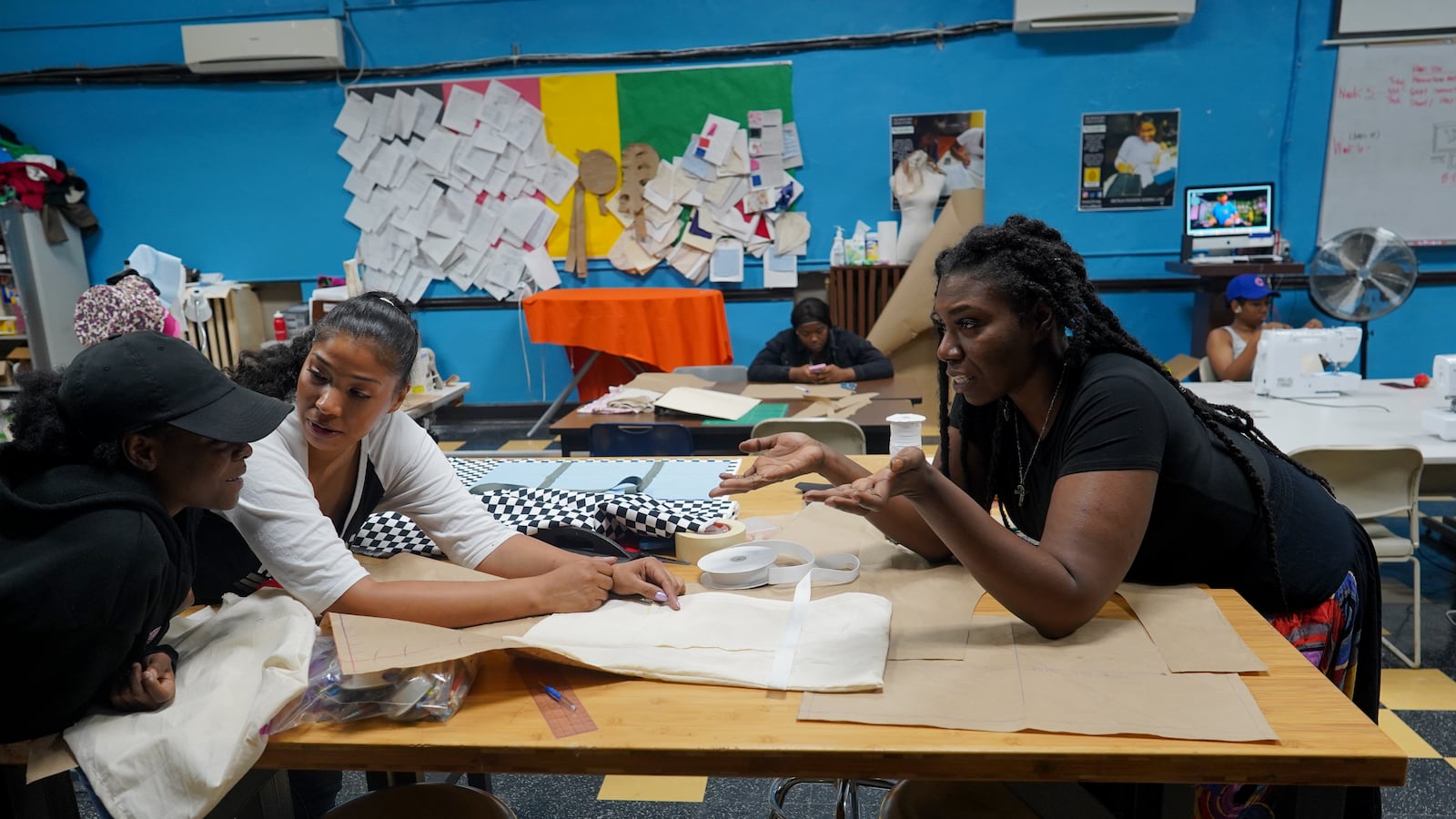During the pandemic, Yasmine Nelson wanted to support herself. So she took on jobs at a McDonald’s in Indiana and a warehouse in downstate Illinois — and fell behind in high school.
Last year, she returned to Chicago determined to get her high school diploma. Woefully short on credits, she enrolled in Peace and Education Coalition Alternative High School, a second-chance campus in the city’s Back of the Yards neighborhood.
She did well in the small, supportive school. But as graduation loomed this spring, Nelson, 19, grappled with uncertainty about what might come next, other than the minimum-wage jobs she’d held since age 15.
Then a school counselor pitched a surprising option: an operating engineer apprenticeship.
It’s the kind of career training opportunity that few alternative high school students like Nelson — former dropouts or students whose studies were derailed by poverty, homelessness, or pregnancy — have access to.
Officials say these students, who in Chicago are disproportionately Black and poor, simply don’t stick around on alternative campuses long enough to take part in time-consuming career and technical education programs, also known as CTE.
Now, as Chicago and other urban districts move to expand these programs, advocates worry alternative school students may be left out.
In Chicago, only 40% of alternative high school students graduate, and even those who do can face bleak career prospects in a marketplace that increasingly expects workers to come in with skills and credentials. Career training exposure can improve their odds of graduating and better prepare them for life after high school, student advocates say.
The broader push to upgrade high school CTE offerings comes amid a pandemic that drove an unprecedented number of students to disengage from school and left crippling staffing shortages in many industries in its wake. Now, in Chicago and across the country, efforts are underway to offer alternative high school students more flexible opportunities to get training at a time when COVID’s academic, mental health, and economic fallout has made these teens more vulnerable than ever before.
“We know our kids are not ready when they leave us, and then they are on their own,” said Sheila Venson, executive director at Youth Connection Charter School, a network of charter alternative schools. “We can get them a diploma, but where do they go next? If we can keep them a little longer, we can send them out with a clearer path.”
No formal path between dropping out and finding a career
In late March, Chicago Mayor Lori Lightfoot made the rounds at a new Skilled Trades Career Fair at downtown Chicago’s McCormick Center. The city and school district had invited thousands of students from the city’s alternative high schools and other schools serving South and West Side teens at risk of dropping out. They could learn about jobs in carpentry, pipe-fitting, welding, and more.
“A good life, a stable income, being able to dream big dreams — this is what this is all about,” Lightfoot told students gathered on the expo’s opening day.
Ironically, shop or vocational classes, as they used to be known, were once seen as a dumping ground for struggling students. Now these programs can lead to well-paid, in-demand jobs, but they’re often out of reach for teens who stumble academically. Few alternative schools offer CTE programs. In their absence, some campuses have offered career exposure and training opportunities on an ad hoc basis, benefiting a few students at a time.
Jack Wuest of the Chicago-based nonprofit Alternative Schools Network, a long-time advocate for alternative high school students, said bringing those students to a trades career expo is not enough to open up access to increasingly specialized professions.
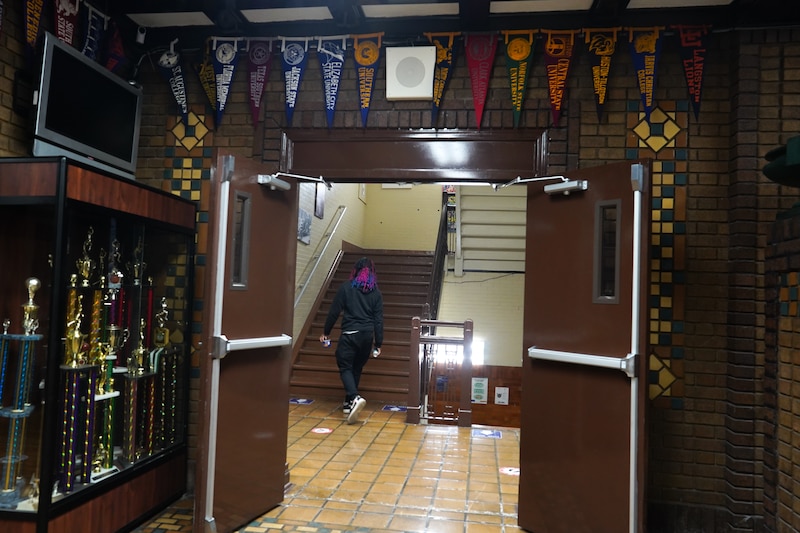
“That’s like the major league teams coming in and showing kids how to be ballplayers,” Wuest said. “Showing kids these trades careers but not giving them the skills to do them? It’s ludicrous.”
Compared with other large urban districts, an unusually large portion of Chicago’s high school students attend alternative campuses. Over the last decade, the city doubled the number of alternative schools, mostly by contracting with new, for-profit operators specializing in catching students up on credits quickly.
Overall, alternative school students are much more likely than their peers at traditional high schools to have disabilities, experience homelessness, get arrested, or become victims of violent crime, a recent report by the University of Chicago’s Education Lab found.
They could also benefit from high-quality CTE programs, advocates say. Many already juggle school with full-time jobs, and the pressure they face to contribute to strained family budgets only increased during the pandemic.
But, said John Wolf, associate director of Education Lab, “most of the career routes the school system offers are designed for traditional students, who are marching along that four-year path to graduation,” .
A 2021 district analysis of CTE expansion opportunities obtained by Chalkbeat is blunt about why alternative schools are not a fit to host career training programs: Students are just not enrolled long enough to complete a full CTE course sequence, which generally takes two to three years. The analysis flagged inequitable access in areas such as the West Side, with its many alternative schools and shrinking traditional campuses.
Brigitte Swenson, the long-time principal of Peace and Education High School, has been a vocal champion of career training for alternative school students.
But she admits it’s a challenge.
“They are mentally at the end of their high school career even if they are not there creditwise,” Swenson said.
The students her school serves are generally older, significantly behind on high school credits — and eager to get their diplomas.
Swenson’s school has connected some students with the citywide Chicago Builds program, which prepares youth for construction careers out of Dunbar Vocational Career Academy in Bronzeville. But with the long commute to the South Side and a significant time commitment, those students struggled to complete the program.
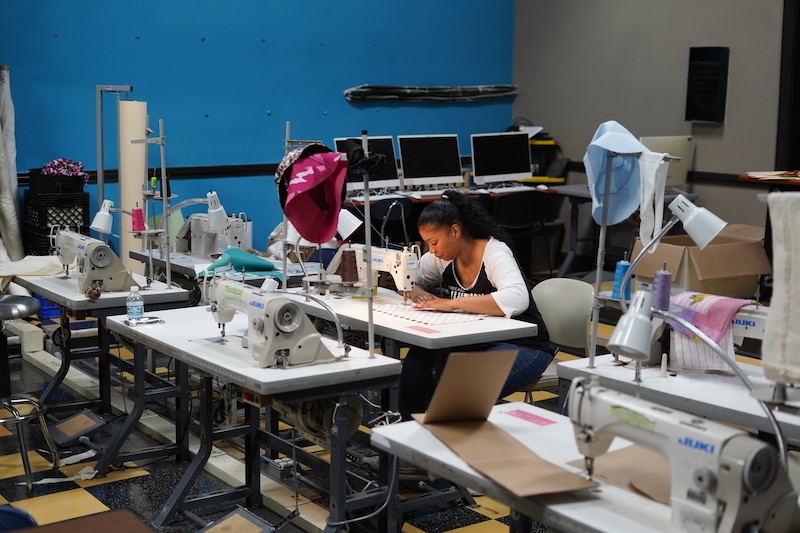
At Youth Connection Charter Schools, Venson says before the pandemic, the district invited its alternative high school providers to apply to host an in-house CTE program. But that would have required committing to at least a two-year sequence of courses and did not involve enough additional funding, Venson said. Because the average time students spend on YCCS campuses is 18 months, YCCS passed.
YCCS campuses, which like other alternative schools suffered major enrollment losses during the pandemic, have explored helping students earn shorter-term “bridge” certificates as stepping stones to more advanced training. The network has eyed a plan called YCCS U, which would allow students who complete graduation requirements to stick around and get career training.
Venson said she worries that the ingrained district idea of alternative schools as efficient credit recovery factories means young people are stepping into the world unprepared.
“Give students the credits, and put them out on the street,” she said. “But these kids need skills and stability.”
Indianapolis model shows potential for CTE
Limited or nonexistent access to CTE for alternative high school students is an issue across the country — despite growing recognition that these young people can benefit from the programs.
But there are examples to prove there’s enormous potential, said Patrick Turner, an assistant research professor at the University of Notre Dame. Take, for instance, a network of charter campuses for high school dropouts that Goodwill, the nonprofit known for its thrift stores, started in Indianapolis in the early 2010s.
Goodwill’s Excel Centers, including one in Gary, Indiana, offer a flexible model where students who are 18 and older earn industry-recognized certifications and college credits while also getting technical and career training. Turner says keys to the program’s success are free child care and transportation, flexible schedules that allow students to work, and life coaches who help students sketch out a future beyond the short-term goal of checking off required high school credits.
“Throughout their education on these campuses, students have their minds not just on getting a diploma but on mapping out their next steps after graduation,” Turner said.
Turner’s research found that students who completed the program saw an almost 40% increase in their earnings in five years compared to young people who applied but didn’t enroll or who started but didn’t finish the program — outcomes that remained consistent across race and gender.
The model has since expanded to five states and Washington, D.C. — with additional campuses, powered with federal COVID recovery dollars, slated to open in Arizona. Research on the earning potential of going through CTE programs in high school is fueling national interest in replicating the model, Turner said.
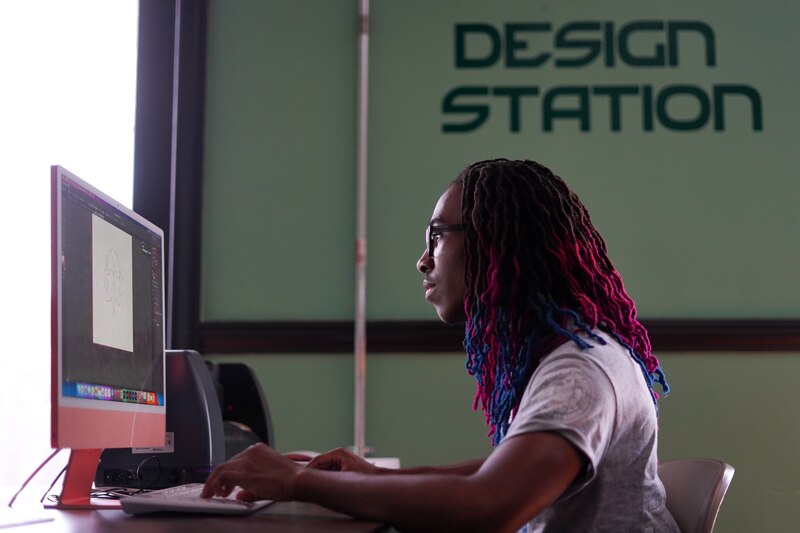
Chicago alternative schools cobble together flexible career programs
Yasmine Nelson, the Peace and Education student, was among about 20 graduating seniors who landed apprenticeships with JLL, a company that staffs operating engineers on Chicago Public Schools campuses. Students in the program, a partnership with the International Union of Operating Engineers Local 399, will earn an all-expense-paid associate degree while working in school buildings.
“I get to go to school and get paid until I graduate?” Nelson recalled thinking as her high school counselor told her about the opportunity. “I was definitely interested.”
At an orientation meeting, a JLL operating engineer told students, who asked why they should go for the apprenticeship instead of starting college, about colleagues who’d gone to college in unrelated fields — then come to train with the company in hopes of landing well-paying, stable jobs. Companies like JLL are eager to cultivate worker pipelines to an aging, predominantly white workforce.
After a press conference to announce the program, Nelson told JLL executives, “I want to be my own boss someday — either at the top of JLL or at my own company.”
Pedro Martinez, the district’s CEO, gave her his business card and promised her a job in the district after she went through the program.
Some local alternative schools are also working to cultivate more career exposure opportunities for students.
On YCCS’s Community Youth Development Institute High School on the South Side, Executive Director Aaron Royster says a decade or so ago, the school made a big push to build a college-going culture, helping students apply to the City Colleges of Chicago, various HBCUs, and elsewhere.
That push foreshadowed the district’s own efforts to better support college-bound students under former CPS CEO Janice Jackson. And it worked. The school, whose students are primarily Black and low-income, saw a marked increase in college enrollment, Royster said.
“Unfortunately, we found that a lot of our students were coming back with nothing but student loans,” Royster said. “It became crippling in some cases.”
On the cusp of the pandemic, the school changed its approach and turned some of its classrooms into hands-on labs, Royster said.
Now, students grow microgreens under LED lights in a former math classroom and other produce for local restaurants in a school garden. They make lotions and soap for sale under the “Nature’s Gifts” brand in the cosmetology lab. They create chess sets and souvenirs using 3D printers and lasers in the industrial design lab. And they are rehabbing a school-owned house in the neighborhood.
“A lot of students don’t know what careers they might want to get into after high school — or what they would actually enjoy,” said Jacquese Stewart, who is a senior this year, who sewed face masks in the school’s fashion lab to sell during the pandemic. “Here, you get to figure it out.”
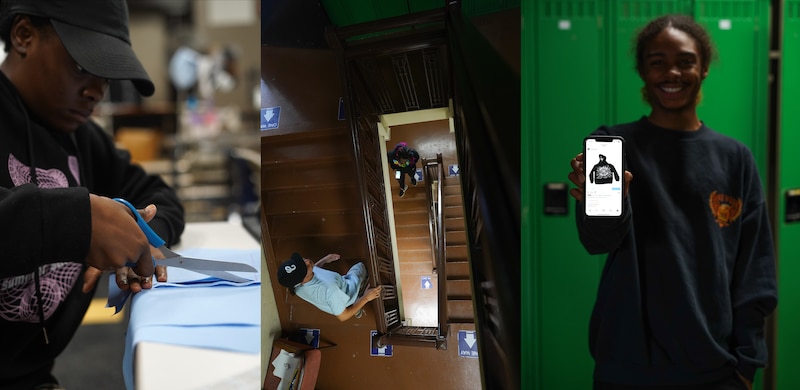
Although the classes taught in those labs are largely electives, the school is trying to help students who want to graduate fast by awarding core credits for that hands-on work. These efforts are still new and were disrupted by the pandemic, but Royster says the school has seen an uptick in the portion of graduates who have jobs lined up at graduation or go on to college. He wants students to be triple threats: prepared for college, careers, and entrepreneurship.
Separately this past school year, the University of Chicago’s Education Lab helped pilot a new effort to connect students with paid internships on one traditional campus and three alternative schools, including Ombudsman South.
At Ombudsman — a for-profit alternative campus tucked away in a strip mall in the Chicago Lawn neighborhood — Judith Bolanos heard about the program from her principal, and she was intrigued by the chance to land a paid internship she could juggle with morning classes.
Bolanos, who was a senior last year, had dropped out of Solorio High School on the city’s Southwest Side not long after the pandemic started, as her family became homeless and started doubling up with relatives and friends across the city. She had tried to get a job, but hit a common Catch 22: Employers wanted to see prior experience, but she couldn’t get it without an employer taking a chance on her despite a lack of skills and high school diploma.
Last winter, staff at Ombudsman, where she arrived last fall to take another crack at graduating, sat her down for mock interviews and resume prep. Through the program, she worked at the local alderman’s office and the school. Bolanos continued taking classes – a condition of participating in the program – while gaining helpful skills, such as working with Google Sheets.
But the experience also made her wish she’d gotten a chance to get more extensive career training before the tail end of her high school career.
“If that opportunity was offered,” she said in April, “I definitely would have taken it.”
Mila Koumpilova is Chalkbeat Chicago’s senior reporter covering Chicago Public Schools. Contact Mila at mkoumpilova@chalkbeat.org.


